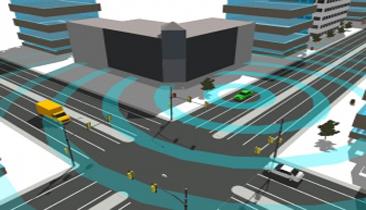Connected Car: Dramatic Growth Ahead
MUNICH — The Internet of Things (IoT) is currently the big thing in technology, and the automotive version of the IoT is the Connected Car. No wonder the growth is similarly astronomic — and now Gartner came up with figures. By 2015 (that is, during the current year), the number of connected things will reach 4.9 billion units — up 30 percent from 2014. By 2020, this figure will quintuple to 25 billion units, believes Gartner. In this picture, connected cars are a major element.
"The connected car is already a reality," said Gartner research director James F. Hines in a press statement, "and in-vehicle wireless connectivity is rapidly expanding from luxury models and premium brands to high-volume mid-market models."
The increased consumption of digital content in the car drives the demand for the hardware infrastructure capable of reproducing this content. The sophisticated infotainment systems required to process this content (audio, video, navigation, V2V information etc) will translate into business opportunities for all kinds of semiconductors — application processors, graphics accelerators, displays, and HMI interface technologies. At the same time, new concepts of mobility and vehicle usage will create new business models which in turn will typically be IT-based, Hines said. The same holds true for the expanding range of alternatives to car ownership, in particular in urban areas.
By 2020, one in five vehicles will possess some kind of wireless network connection. This amounts to more than a quarter billion connected cars. The proliferation of vehicle connectivity will greatly influence the most important functional areas of telematics, automated driving, infotainment and mobility services.
With respect to the entire IoT (not only the connected car), Gartner sees no single dominant IoT ecosystem platform through 2018. The lack of any coherent set of business or technical models for the IoT will continue to force companies to develop their own IoT ecosystems.
"The connected car is already a reality," said Gartner research director James F. Hines in a press statement, "and in-vehicle wireless connectivity is rapidly expanding from luxury models and premium brands to high-volume mid-market models."
The increased consumption of digital content in the car drives the demand for the hardware infrastructure capable of reproducing this content. The sophisticated infotainment systems required to process this content (audio, video, navigation, V2V information etc) will translate into business opportunities for all kinds of semiconductors — application processors, graphics accelerators, displays, and HMI interface technologies. At the same time, new concepts of mobility and vehicle usage will create new business models which in turn will typically be IT-based, Hines said. The same holds true for the expanding range of alternatives to car ownership, in particular in urban areas.
By 2020, one in five vehicles will possess some kind of wireless network connection. This amounts to more than a quarter billion connected cars. The proliferation of vehicle connectivity will greatly influence the most important functional areas of telematics, automated driving, infotainment and mobility services.
With respect to the entire IoT (not only the connected car), Gartner sees no single dominant IoT ecosystem platform through 2018. The lack of any coherent set of business or technical models for the IoT will continue to force companies to develop their own IoT ecosystems.

No comments:
Post a Comment